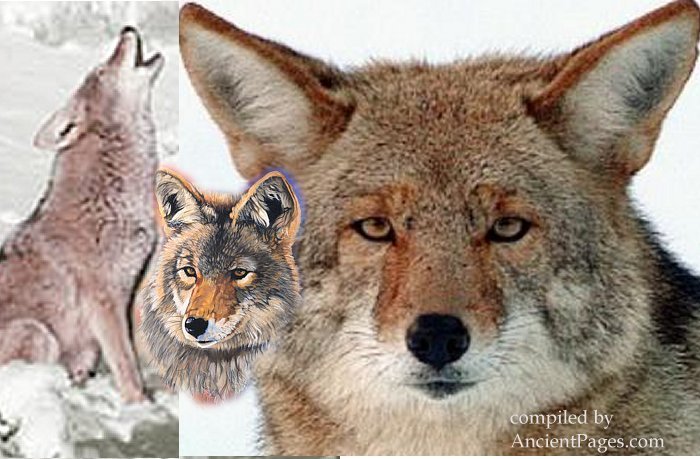Coyote: Hero, Trickster, Immortal And Respected Animal In Native American Myths
A. Sutherland - AncientPages.com - The Coyote is a very prominent animal in many Native American legends.
This animal plays an essential role in the mythology of tribes all over North America.
"Native Americans respected the animal for its cunning and its ability to survive in forest, mountain, prairie, and desert country. In some Indian stories, the mythical cultural hero Coyote helps people. But usually, he is a trickster who plays practical jokes on people or a meddler who ruins people's plans. He is often regarded as greedy. Whether good or bad, however, Coyote is always clever. Coyote was one of the Holy People in the Dineh religion." 1
The basis of his character is the same in all myths; however, certain character traits of this extraordinary figure vary widely from region to region. Like real coyotes, mythological ones are usually notable for their crafty intelligence, stealth, and voracious appetite.
However, American Indian coyote characters vary widely from tribe to tribe. In some Native American coyote myths, the animal is a revered cultural hero who creates, teaches, and helps humans; in others, he is a sort of antihero who demonstrates the dangers of negative behaviors like greed, recklessness, and arrogance; in still others, he is a comic trickster character, whose lack of wisdom gets him into trouble while his cleverness gets him back out. In some Native coyote stories, he combines all three at once.
In some Native American myths, Coyote is a respected and admired cultural hero helping people; in others, many see in him negative ("dark") personality traits like arrogance, greed, and recklessness. Still, others consider the animal a comic trickster character whose lack of wisdom gets him into trouble while his cleverness gets him back out.
In some Native coyote stories, he combines all three at once.
In myths of the Kalapuya tribe of Native Americans, with their traditional homeland in the Willamette Valley in Oregon, the Coyote remains the most common trickster figure.
The Kalapuya stories about this Old Man Coyote range from funny tales of mischief and clowning to legends with much more profound meaning and are devoted to the nature of the world.
Also among the Modocs, a Native American people who originally lived in the area that is now northeastern California and central Southern Oregon, the Chief Coyote is a trickster that possesses the indestructible disk of the sun, through which he is immortal, or, at least, is renewed every day to carry that luminary. Because of his vanity and boastfulness, the Coyote undertakes various ambitious enterprises, in which he fails due to his passions.
The Shasta Indians have a long tale of a coyote whose fond grandmother tried to make him a great sorcerer, but he had to avoid several temptations on his way to the sacred mountain. Unfortunately, he failed to succeed due to his nature.
In many Native American cultures, the Coyote is credited with bringing humanity the gift of fire, the destruction of monsters, the making of waterfalls, and the teaching of valuable arts to the Indians. But perhaps the most famous and fascinating incarnation of this remarkable creature is presented in the Nez Perce tribe's myth of Coyote and the Shadow People. His actions lead to humankind being forever separated from the spirit realm of the dead.
In the cyberspace of Coyote Kiva, the creature is restored to his ancient place among the stars. His image, with the Maasaw or a shaman, is traced on the kiva wall. He is honored for his magic, not feared, respected for his wisdom, not ridiculed. He is a symbol of expectation, endurance, renewal, and healing of Earth. He is a symbol of music, dance, and joy.
In myths of the Southwest Native Americans, the Coyote - is described as having human form and, occasionally, animal form, sometimes helping people. Still, most often, his impulsive and foolish behavior causes nothing but trouble for everyone around him. Frequently, he is killed through his recklessness, but miraculously always comes back to life afterward.
Among the Pueblo tribes, the Coyote was believed to have hunting medicine.
To the Zuni Indians, they are masters of the medicine powers of that particular region.
Zuni Indian hunters kept the coyotes' stone effigies as one of their six hunting fetishes of the six directions. The six directions are each represented by a fetish of a different color and are as follows:
North --------- Mountain Lion (yellow)
West ---------- Coyote (blue)
South --------- Badger (red)
East ---------- Wolf (white)
Upper Region -- Eagle (multiple colors)
Lower Region -- Mole (black)
Coyotes are also used as clan animals in some Native American cultures.
Tribes with Coyote Clans include the Cahuilla tribe, the Mohave, the Hopi (whose Coyote Clan is called Isngyam or Ish-wungwa), the Zuni (whose Coyote Clan name is Suski-kwe,) and other Pueblo tribes of New Mexico. Some tribes, such as the Pomo, also had a Coyote Dance among their traditional dances.
Written by – A. Sutherland AncientPages.com Staff Writer
Copyright © AncientPages.com All rights reserved. This material may not be published, broadcast, rewritten or redistributed in whole or part without the express written permission of AncientPages.com
Expand for referencesReferences:
- Waldman, Carl. Encyclopedia of Native American Tribes
Hartley B. Alexander, Native American Mythology
More From Ancient Pages
-
 Fragarach: Supernatural Sword That Controlled Winds, Cut Through Wood, Metal And Bricks In Irish Myths And Legends
Celtic Mythology | May 14, 2020
Fragarach: Supernatural Sword That Controlled Winds, Cut Through Wood, Metal And Bricks In Irish Myths And Legends
Celtic Mythology | May 14, 2020 -
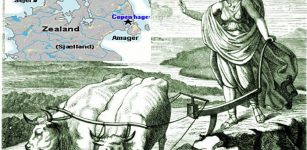 Gefjon: Norse Fertility Goddess Who Knew Humans’ Fates, And Plowed Away Part Of Sweden To Give It To Denmark
Featured Stories | Nov 22, 2019
Gefjon: Norse Fertility Goddess Who Knew Humans’ Fates, And Plowed Away Part Of Sweden To Give It To Denmark
Featured Stories | Nov 22, 2019 -
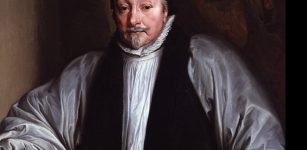 On This Day In History: William Laud Archbishop Of Canterbury Beheaded – On Jan 10, 1645
News | Jan 10, 2017
On This Day In History: William Laud Archbishop Of Canterbury Beheaded – On Jan 10, 1645
News | Jan 10, 2017 -
 Earth’s First Animals Had Particular Taste In Real Estate
Evolution | May 10, 2023
Earth’s First Animals Had Particular Taste In Real Estate
Evolution | May 10, 2023 -
 Puzzling Construction Of Unique Sunken Ship From The 17th Century Examined
Archaeology | Jul 28, 2022
Puzzling Construction Of Unique Sunken Ship From The 17th Century Examined
Archaeology | Jul 28, 2022 -
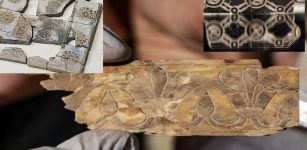 Extraordinary Collection Of Ivory Plaques Dated To The First Temple Period Unearthed In Jerusalem
Archaeology | Sep 8, 2022
Extraordinary Collection Of Ivory Plaques Dated To The First Temple Period Unearthed In Jerusalem
Archaeology | Sep 8, 2022 -
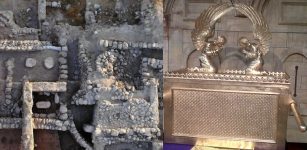 Mysterious Stone Table Found At Biblical Temple In Jerusalem – Evidence Of The Ark Of The Covenant?
Archaeology | Dec 20, 2019
Mysterious Stone Table Found At Biblical Temple In Jerusalem – Evidence Of The Ark Of The Covenant?
Archaeology | Dec 20, 2019 -
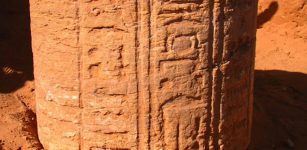 Abu Erteila’s Lost Temple And The Meroitic Empire: New Discoveries Shed Light On Nubian Civilization
Archaeology | Jan 14, 2016
Abu Erteila’s Lost Temple And The Meroitic Empire: New Discoveries Shed Light On Nubian Civilization
Archaeology | Jan 14, 2016 -
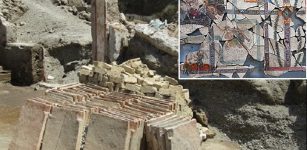 Pompeii Region IX: Roman Advanced Construction Techniques In New Light
Archaeology | Mar 27, 2024
Pompeii Region IX: Roman Advanced Construction Techniques In New Light
Archaeology | Mar 27, 2024 -
 Nomadic Pasture Farming Was Developed 7,000 Years Ago In Swiss Alps
Archaeology | Apr 13, 2017
Nomadic Pasture Farming Was Developed 7,000 Years Ago In Swiss Alps
Archaeology | Apr 13, 2017 -
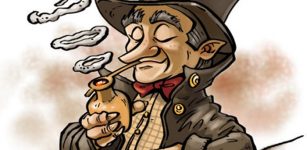 Clurichaun – Little Naughty And Drunken Fellow Akin To Leprechaun In Irish Folklore
Featured Stories | Sep 13, 2019
Clurichaun – Little Naughty And Drunken Fellow Akin To Leprechaun In Irish Folklore
Featured Stories | Sep 13, 2019 -
 Almost 1000 Previously Undiscovered Prehistoric Barrows Identified In The Netherlands
Archaeology | Oct 15, 2024
Almost 1000 Previously Undiscovered Prehistoric Barrows Identified In The Netherlands
Archaeology | Oct 15, 2024 -
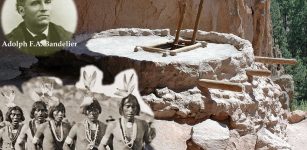 On This Day In History: Adolph Bandelier Swiss-American Who Studied The American Indian Cultures – Born – August 6, 1840
News | Aug 6, 2016
On This Day In History: Adolph Bandelier Swiss-American Who Studied The American Indian Cultures – Born – August 6, 1840
News | Aug 6, 2016 -
 Unique Flagship ‘Gribshunden’: Spectacular Discoveries
Archaeology | Oct 2, 2019
Unique Flagship ‘Gribshunden’: Spectacular Discoveries
Archaeology | Oct 2, 2019 -
 Remote North Atlantic Islands Were Settled By An Unknown Group Of Humans Centuries Earlier Than Thought
Archaeology | Dec 27, 2021
Remote North Atlantic Islands Were Settled By An Unknown Group Of Humans Centuries Earlier Than Thought
Archaeology | Dec 27, 2021 -
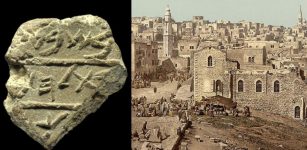 Ancient Seal Found In The City Of David: Evidence Of Bethlehem’s Existence Long Before Jesus Was Born
Archaeology | May 24, 2012
Ancient Seal Found In The City Of David: Evidence Of Bethlehem’s Existence Long Before Jesus Was Born
Archaeology | May 24, 2012 -
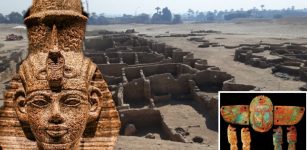 Lost Golden City Of Pharaoh Amenhotep III Discovered In Luxor
Archaeology | Apr 9, 2021
Lost Golden City Of Pharaoh Amenhotep III Discovered In Luxor
Archaeology | Apr 9, 2021 -
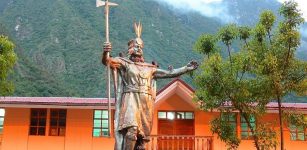 Illapa: Powerful Master Of Clouds, Rain And Hail – Worshipped By Inca People
Featured Stories | Jul 7, 2016
Illapa: Powerful Master Of Clouds, Rain And Hail – Worshipped By Inca People
Featured Stories | Jul 7, 2016 -
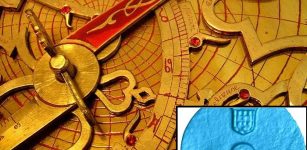 World’s Oldest Marine Navigation Tool Was A Sophisticated Astrolabe
Archaeology | Oct 25, 2017
World’s Oldest Marine Navigation Tool Was A Sophisticated Astrolabe
Archaeology | Oct 25, 2017 -
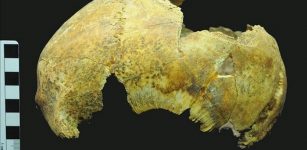 5,000-Year-Old Russian Skull Offers Evidence Of Brain Surgery Made With Stone Scalpel
Archaeology | Oct 23, 2020
5,000-Year-Old Russian Skull Offers Evidence Of Brain Surgery Made With Stone Scalpel
Archaeology | Oct 23, 2020

